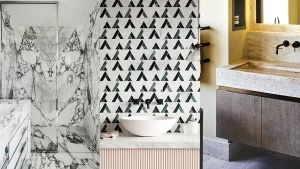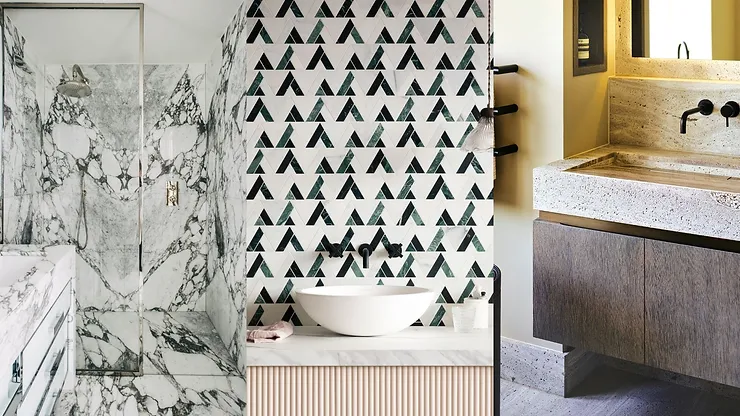Introduction:
Bathroom design is a delicate art that requires a harmonious blend of functionality and style. A well-designed bathroom not only serves its practical purpose but also provides a serene and aesthetically pleasing space. In this article, we will explore the key elements of bathroom design, focusing on how to strike the perfect balance between functionality and style.

Understanding the Space:
To create a bathroom that seamlessly combines functionality and style, it’s essential to understand the available space. Assess the dimensions, layout, and any architectural constraints. This understanding will guide your design choices and help maximize the functionality while enhancing the overall aesthetics.
Functional Layout:
A functional bathroom design starts with a well-thought-out layout. Consider the placement of fixtures, such as the sink, toilet, shower, and bathtub. Aim for an efficient flow that allows for easy movement and accessibility. Think about the practicality of storage solutions, such as vanities, shelves, or cabinets, to keep the space organized and clutter-free.
Material Selection:
The choice of materials plays a significant role in defining the style and functionality of a bathroom. Opt for materials that are durable, water-resistant, and easy to maintain. Explore different textures, colors, and finishes to create visual interest and complement the overall design theme. From sleek modern tiles to natural stone accents, the right materials can transform a bathroom into a stylish oasis.
Lighting Matters:
Lighting is a crucial aspect of bathroom design that impacts both functionality and ambiance. Incorporate a layered lighting scheme that includes task lighting for practical activities like grooming, ambient lighting for overall illumination, and accent lighting to highlight focal points or architectural features. Use dimmers to adjust the lighting intensity and create a relaxing atmosphere.
Cohesive Design Elements:
To achieve a harmonious and stylish bathroom, consider a cohesive design theme. Whether you prefer a contemporary, traditional, or eclectic style, ensure that all design elements work together seamlessly. Coordinate the colors, patterns, and finishes of fixtures, tiles, walls, and accessories to create a unified and visually appealing space.
Personalized Touches:
While functionality and style are essential, don’t forget to infuse your personal taste into the design. Add elements that reflect your personality, such as artwork, plants, or decorative accents. These personal touches will make the bathroom feel like a sanctuary tailored to your preferences.
Conclusion:
Designing a bathroom that perfectly blends functionality and style requires careful consideration of space, layout, materials, lighting, and cohesive design elements. By finding the right balance between these aspects, you can create a bathroom that is not only efficient and practical but also a visually stunning retreat where you can relax and rejuvenate. Let your creativity flow as you embark on the art of bathroom design.

